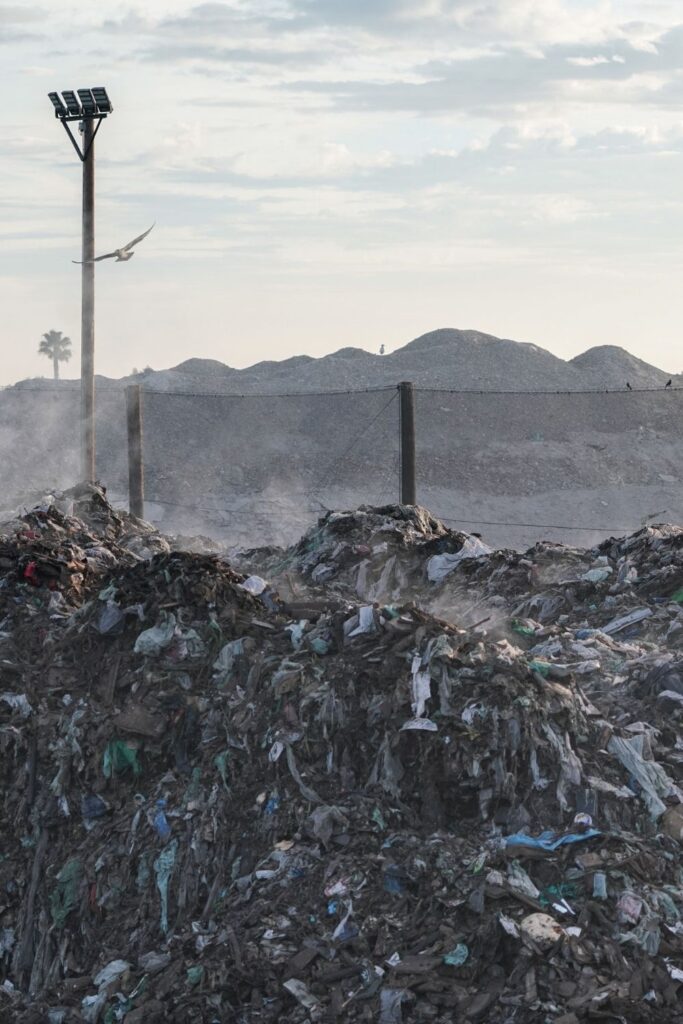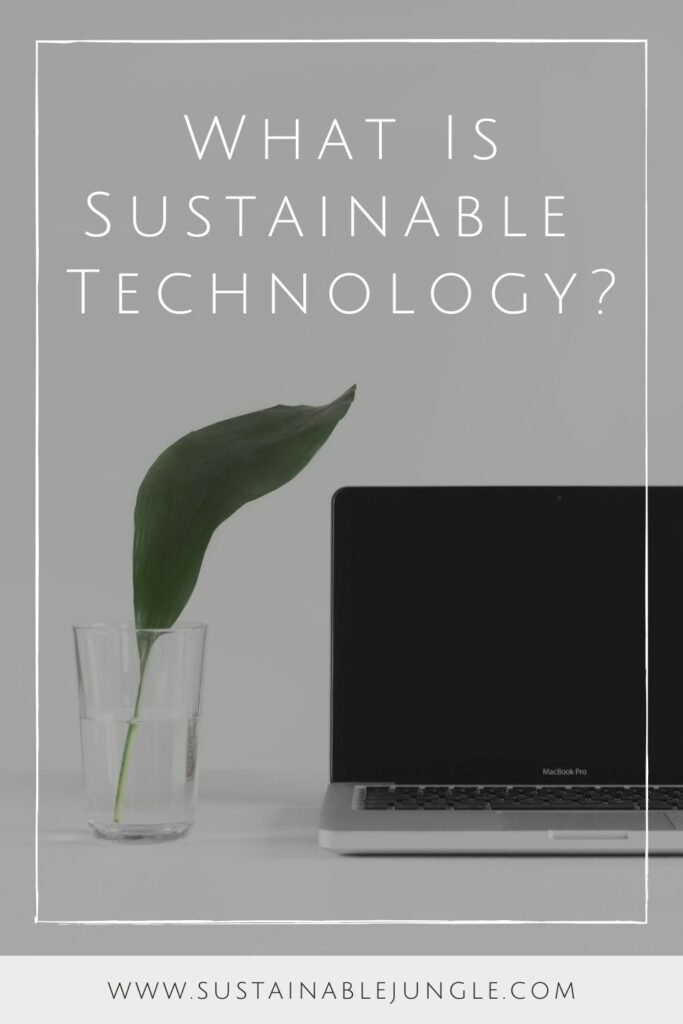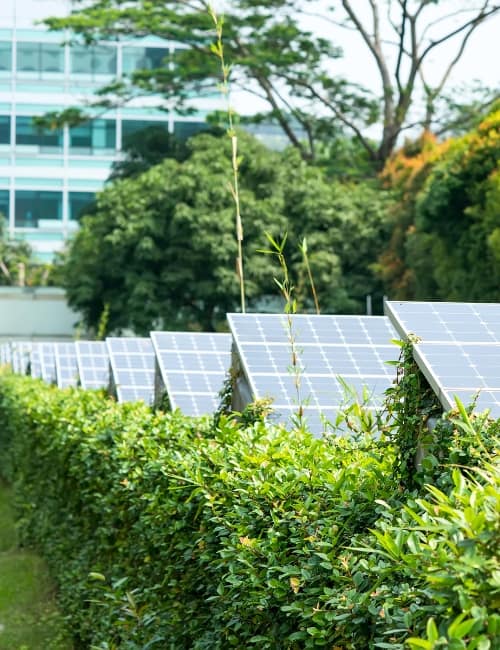
What Is Sustainable Technology?
Have you been wondering about the apparent paradox that is sustainable technology?
You’ve already noticed how irreversibly our everyday lives are entwined with various devices, and you’re hoping there’s a way for this coexistence to be harmonious?
Us too! You’re among friends here.
It is more important than ever that the technology we depend on so heavily can be produced, utilized, repaired, and disposed of, all in ways that aren’t harmful to the people or natural environment involved.
Cue: Sustainable technology. Is it a paradox? Let’s find out.
Sustainable technology is a broad term that encompasses two concepts: technology that has been designed specifically to remedy or prevent environmental issues, and technology that has been produced with sustainability in mind.
We’ll touch briefly on the first concept, but we’re going to focus on the second – what sustainable and eco friendly technology means for us in our everyday lives and how having an understanding of what it is can help us to make better decisions.
Without further ado…
Quicklinks For Sustainable Technology
- What is Eco Friendly & Sustainable Technology?
- Why Should We Care About Sustainable Technology?
- How Can We Consume & Use Technology More Sustainably?
What is Eco Friendly & Sustainable Technology?

There are many, many sustainable technology definitions currently in use around the world. To us, for technology to be truly sustainable or eco friendly, it should ideally:
- Be sustainably and ethically created and used
- Prevent harm or shift harm away from people and the environment
To tease this out further, sustainable technology is both technology that has been designed specifically to mitigate or solve environmental issues, and technology that can be produced, used, and disposed of in a sustainable way.
Unfortunately, these criteria do not always overlap and in some cases can even be mutually exclusive when you look at the bigger picture.
Examples of those technologies that solve or mitigate big hairy environmental issues:
- Renewable energy like sustainable solar panels and hydro dams, along with things like electric vehicles and LED lighting
- Sustainable building technology which focuses on energy efficiency, reduced carbon footprints and the use of more natural, renewable materials
- Sustainable agriculture technology such GPS enabled tractors, moisture sensors, drones and smart irrigation
- Sustainable water technology such as finding new ways to reuse waste water and desalinate sea water
Some of these technologies’ sole purpose is to undo some of the damage that we as humans have already done, such as carbon capture and storage technology. Some of the latest sustainable technology examples in this category include awesome projects like Seabin, or Lixea.
These types of technologies are critical to solving some of our biggest problems, but as we will come to see, there are ethical implications of technology everywhere we look and no perfect solutions.
For example, portable solar panels and electric cars still require the mining of metals for their production. The batteries of electric transport are particularly problematic, in both their production and disposal at the end of their relatively short lives.
Then there are everyday consumable technologies that are probably more relevant for most of us in our day-to-day lives and where we as individuals can have a big impact.
In this context, sustainable and eco friendly technology refers to products that have been manufactured with conscious attempts to limit the environmental and ethical consequences of their production, use, and disposal.
Fairphone is probably the best example of a sustainable technology company that has managed to tick all of these boxes.
Another example might include a washing machine that has a particularly efficient water and energy rating and has been designed so that it can be repaired and then recycled easily.
These types of eco friendly technology examples are still limited as far as consumables go.
So what are we to do?
Obviously, we all need to consume to some degree simply in order to live in the modern world. The trick then is to find the balance between mindless and unnecessary consumerism, and living in a cave.
If we can vote with our dollars and shift the status quo away from the ‘newer/shinier/bigger/faster/more is always better’ to ‘what I already have is perfectly adequate’, this is a huge step in the right direction.
Why Should We Care About Sustainable Technology?

Good question.
Many people are completely unaware of the extent of the environmental and ethical issues in technology today. From production, right through consumption to disposal, the ethical implications of technology are vast and far-reaching.
So, let’s take a quick look at a typical scenario for your everyday technology product:
Raw Materials
First up, you’ve got the raw materials needed for the product itself which is nearly always some combination of metal and plastic.
Metal nearly always needs to be mined which is problematic because most mining takes place in developing countries without the necessary environmental protection, human rights, or health and safety measures in place.
For example, cobalt mining in the Democratic Republic of Congo (DRC) is rife with human rights abuses, child labor, and conflict. Cobalt is a necessary component of the lithium-ion batteries used in smartphones and more than 60% of it comes from the DRC.
Meanwhile, the manufacture of plastic utilizes non-renewable fossil fuels and huge amounts of water, resulting in pollution and waste before the plastic has even begun its life as a consumer product.
Manufacturing
The manufacturing process of the product itself then requires further fossil fuel and water use, together with the materials and energy that went into building the factories and machinery used for manufacture.
Depending on where the factories are located, there are also likely to be further human rights violations at play with long working hours, inadequate compensation, and often child labor.
As environmental awareness is typically a low priority in places where human rights are a low priority, it can be safely assumed that industrial waste from the manufacturing process is likely not contained, but leading to the pollution of surrounding land, air, and water supplies.
Shipping
The transport of materials and the final product between various stages of manufacture and sale also must be taken into account.
The shipping industry has thus far managed to fly relatively under the radar in terms of its role in global pollution. But that needs to change because its role is significant.
Shipping routes crisscross the oceans in a dense network leaving almost no sea untouched. Impacts range from underwater noise pollution, oil and chemical spills, air pollution, and greenhouse gas (GHG) emissions.
In fact, ships actually contribute more GHGs each year than airplanes.
Lack of Transparency
The worst-case scenario for any one piece of technology isn’t pretty. Realizing your phone battery may or may not have been involved in the gross human rights violations of the DRC is a pretty hard pill to swallow.
But it’s even more frustrating that it’s almost impossible to know for sure either way. The supply chains of most technology companies are long, complex, and lacking in transparency.
Raw materials used in consumer electronics are sourced from all over the world so it’s just about impossible to know for sure if the product you’re buying has been produced sustainably.
In all likelihood, if the product doesn’t explicitly and unequivocally say that it was made with workers, local communities, and the environment in mind then it almost certainly was not.
As you can imagine, this lack of transparency makes greenwashing possible and ubiquitous.
Disposal
Last but not least, aside from the energy required to run the device through the course of its life, what happens when it becomes redundant?
“Redundant” being the operative term because the bulk of technology is discarded before it has reached the end of its workable life.
E-Waste is a significant and growing issue. Did you know that the average phone user replaces their device every 18 months?
Disposing of technology leads to a host of pollution problems relating to toxic materials such as heavy metals and flame retardants. LCD screens, televisions, and computers are particularly bad.
Furthermore, the bulk of E-waste from developed countries gets sent to developing countries. Here it is either burned, causing air pollution, or dumped where people, often children, forage unprotected for materials that they can sell, being exposed in the process to toxic waste.
If you need this information to be made real for you through visual exploration, we recommend watching Welcome to Sodom.
How Can We Consume & Use Technology More Sustainably?

This is all painting a pretty dire picture.
It can feel a little like pushing a rock uphill, right? Or perhaps like the spinning wheel of death…
But the good news is, just like there are sustainable ways to approach other areas of our lives (for example in fashion, travel, and beauty), there are significant ways in which we can make a difference through how we choose to consume technology at the individual level.
By choosing to consume less overall, buying second-hand where possible, and choosing sustainable technology products when we do absolutely need to buy new, we can change the stats in favor of more ethical technology use.
1. Consume Less Technology or None at All
The best course of action when it comes to consuming sustainable tech products is of course to not consume them at all.
Most smartphones should comfortably be able to last three years before their battery life starts to reduce and their operating systems become outdated. But if well looked after, a Samsung phone should last in the realm of five years and an iPhone can be functional for ten.
So why are so many people discarding their phones after 18 months?
We know the answer already. Aside from planned obsolescence, which doesn’t help, our culture of consumerism has grown completely out of hand.
We have the power to buck the trend. We live in the age of the Minimalists, where minimalism and slow living movements are shaking up the consumer world and encouraging people to take stock of their possessions and rein in their consumption.
Adopting this philosophy when it comes to technology consumption is more important than ever, because unlike some areas of consumerism, it’s almost impossible for tech products to be truly sustainable.
Mining, harvesting, or extracting any non-renewable materials from the earth (e.g. the metals required for electronic devices) will always be unsustainable, regardless of how much effort has been put into making the process more environmentally friendly.
2. Where Possible, Repair Your Tech
This is an important one.
Our consumer culture has forgotten what was once second nature to our grandparents: Repair.
While some products have been made to be especially difficult or impractical to repair, the culture is shifting, as can be seen with the “right to repair” movement. Hopefully soon, more and more products will be made with easy repair in mind.
So, before you give up on your gadget, make some phone calls and see if repairs might be possible.
3. Buy Second hand or Refurbished Technology
Since the options available for truly sustainable new technology are so limited, buying second hand or refurbished is the next best option.
If you have decided that you really do need to replace the item in question, choosing second hand is the best possible thing you could do for the environment.
Extending the life of a product and saving it from the landfill is helping to do justice to the people and environments that were involved in manufacturing the product in the first place.
Luckily, refurbished smartphones have been an option for a while and come with the added bonus of saving a lot of money! But anything can be purchased second hand so it pays to get thrifty and see what’s available.
4. Make More Sustainable Choices when Buying New
Lastly, if you have exhausted all other options and genuinely need to make a new purchase, take a little time, do a little research and choose an electronics company that is making clear and conscious progress towards sustainability.
While greenwashing is definitely a thing, it’s not hard to do a little digging and see what comes to light.
For example, Ethical Consumer put together some rankings for the most common cell phone brands based on how they performed when it came to handling conflict minerals, supply chain transparency, and use of toxic materials.
So what else should we look for in sustainable and ethical technology?
Ideally, we want to look for tech providers or manufacturers with policies that at the very least consider and present their position on:
Energy and Water Efficiency
This is the easiest place to start when it comes to home appliances and does have the power to make a significant difference if enough people are on board.
Different countries have different rating systems with the Energy Star label used in the U.S. and an A-G rating in the EU.
These ratings don’t say anything about the manufacturing process, ability to repair, or end-of-life policies, but they can save a lot of energy throughout the life of the product while it is in use, saving you money too!
When it comes to appliances that use water (like dishwashers and washing machines), each appliance should list the amount of water that it uses.
Ethical Sourcing of Raw Materials
Do they, for example, ensure that no child labor is used in the mining of materials and that local communities are adequately compensated for their work?
Are minerals sourced from conflict-free regions and are there any environmental practices in place to remedy the impacts of the mine? Is there any transparency to their supply chain?
Ethical Manufacture
Are there adequate policies in place to ensure the well-being of factory workers and that they’re not unduly exposed to pollution or any unsafe working conditions?
Are workers paid fairly?
Is waste and run-off from manufacturing plants captured and re-used or disposed of safely? Do the factories or manufacturing plants use renewable energy or fossil fuels?
Quality and Longevity
Is the product durable and built to last? Can it be repaired if it’s damaged?
A solid warranty is usually a sign of a high quality product.
End of Life Policies
Are there ways to recycle the product or parts of the product at the end of its useful life?
Are they rethinking their design policies to move towards a circular economy?
Certifications
Certifications make it a little easier to sift through the huge body of information that a company may present on its website in an effort to appear more sustainably minded.
While not a perfect solution, if the company has succeeded in securing some third-party credentials, this is definitely a step in the right direction.
There are numerous certifications available spanning the use of recycled and non-toxic materials to fair trade supply chain and labor practices.
Ethical & Green Business Practices
Ethical and green business practices generally make for a more environmentally (and financially) sustainable business and happier employees.
And importantly, they make for a more community-oriented private sector!
These types of practices can include (but are not limited to) charitable giving, community projects, in-house green teams, carbon commitments, diversity and inclusion programs, corporate governance policies, and various other commitments to the SDGs.
At the moment there is little available in the way of truly eco friendly technology examples. This makes it all the more important that sustainable tech companies go the extra mile to mitigate some of their impact through initiatives like carbon off-setting, or supporting local environmental restoration projects.
In saying this, extra initiatives that look good on the surface can easily be used for greenwashing while having little tangible impact, so it pays to observe with a discerning eye!
Sustainable Technology Guides
As you’ll soon discover, finding tech companies that meet all the ideals above is tricky, if not impossible.
To help make better buying decisions when it comes to technology, we’re building a list of more sustainable technology & gadget choices. As you’ll see from these guides below, the industry has a long way to go but we’ll be updating these lists and adding to them regularly:
Hopefully sooner rather than later, we’ll start to see more and more tech manufacturers going further and finding ways to build the circular economy into the very design of the product.
At the end of the day, choosing to purchase the most sustainable technology products available is a way of voting with our dollars, putting pressure on the technology industry to adapt to consumer preferences.
5. Use Your Tech Wisely
We mentioned above how smartphones can last, on average, twice as long as people typically keep them for. This brings us to one important caveat to all this sustainable tech talk – it’s not just about what you buy but how you use it.
Take washing machines, tumble dryers, and dishwashers, for example. All three can be used with varying degrees of efficiency depending on how you fill them and what time of day you run them.
Did you know running appliances during peak hours puts more stress on energy supply systems and makes it harder for power supplies to maintain environmental sustainability?
If you’re reliant on the grid, choosing to run your washing machine overnight is better for the environment.
Furthermore, did you know there is an optimum way to load your washing machine to ensure that everything is washed efficiently?
Overloading or under-loading both affect the ability of the machine to do its job by limiting the amount of friction that the clothes experience, while under-loading is also wasting energy and water.
You can help to mitigate the waste that results from each load of laundry by choosing eco friendly detergents and using a Guppyfriend laundry bag. Last but not least, many clothes can also be effectively cleaned using a cold wash instead of hot.
And air drying your clothes is far more sustainable than tumble drying.
Aside from these points, looking after your technology by taking care of it in a way that will maximize its life is one of the most important things you can do to live sustainably with technology in your life.
Prone to dropping your phone? Or maybe you live with a toddler?
Invest in a screen protector and a shock-proof sustainable phone case. The longer your phone stays scratch and crack-free, the more inclined you will be to continue to look after it before replacing it.
6. Dispose of Your Tech Consciously

Even after we’ve looked after our devices, loving and nurturing them through the ups and downs of life, their lives will, inevitably, come to an end.
So what then?
There are right and wrong ways to dispose of technology.
The best thing you can do is actually not dispose of it. Before you get to that point, there are many alternative avenues to consider that encourage moving towards a circular economy and are better for environmental and human health.
Options for repair are becoming more widely accessible so this should be the first choice.
If repair is no longer possible, then donating your device for parts, recycling or refurbishment is the only other sustainable option. There are many buyback services that mean you may even be able to make a few dollars in the process.
If you have exhausted all avenues and disposal is really necessary, please don’t simply chuck your device in the trash. Ending up in the landfill or a developing country with limited safety regulations is not an eco-friendly end for your device.
Instead, a simple online search should bring up multiple drop-off points for responsible disposal and hopefully recycling of used technology.
7. Push for Change

Many people forget that we, as consumers, have the power to pressure tech companies to change. We can do this by voting with our dollars and demanding the accountability and transparency that is currently sorely lacking.
Unfortunately, the more sustainable option is also usually more expensive. This poses an extra challenge for those of us trying to watch our spending.
However, the solution is simple and brings us back to the concept of slow consumption or a level of minimalism that works for you.
If we’re only replacing items when they really, really need replacing, then we can afford to spend a little more, (or as much as our eco friendly wallet will allow) when the time does come.
Lastly, social media now provides opportunities for us to push for more sustainable technology solutions.
If you find yourself following an influencer who is representing an unsustainable brand or level of consumption, you can still affect change by letting them know, unfollowing that account, or choosing to not interact with or ‘like’ posts that involve unnecessary consumerism.
Final Thoughts On Sustainable & Eco Friendly Technology
Sometimes it’s hard not to get a little overwhelmed by the seriousness of the issues our planet is facing. It can be hard to reassure ourselves that our little drop in the ocean does actually count.
But, please be reassured, it really does count!
Sure, it’s possible that we could go back to pre-smart phone days and get by in this day and age. But we don’t want to just get by, we want to be able to experience and enjoy all the benefits and wizardry that technology has to offer.
We want to keep up to date and be connected.
But we need to do so in a responsible manner which is why we can, and should opt for sustainable and ethical technology choices.
As always, please share these ideas with your friends and family to help get the word out about sustainable technology.





All interesting. In your research and thinking, the long term unintended consequences of nanotechnology to human/animal biology need to be seriously studied
Patricia